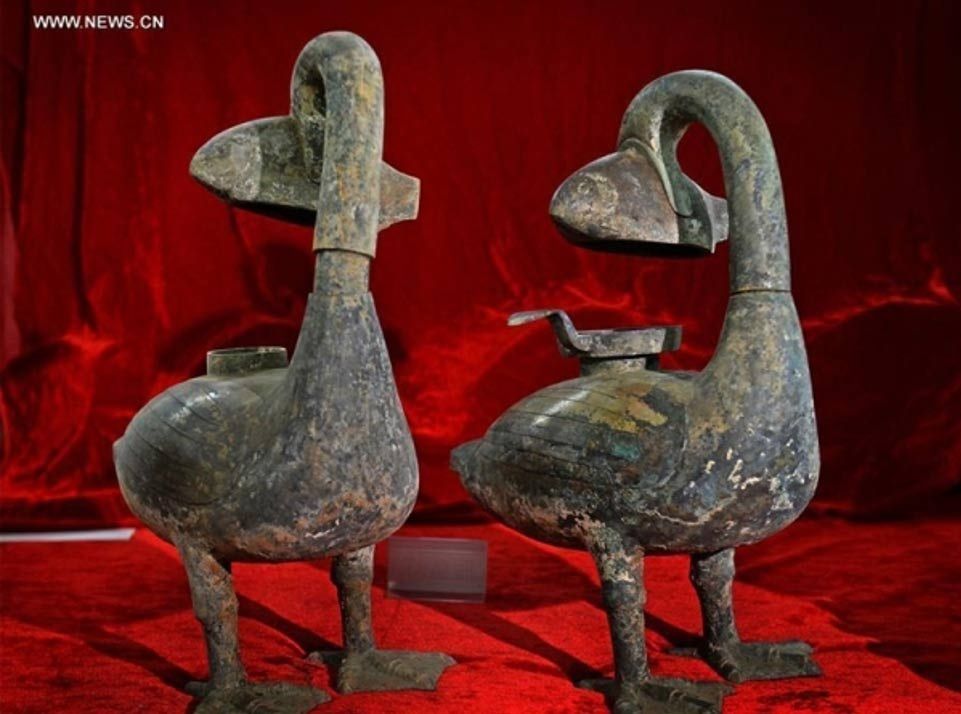Post by UKarchaeology on Nov 17, 2015 18:27:58 GMT

Archaeologists Discover 2,000-Year-Old Smoke Absorbing Lamps in Chinese Tomb
Archaeologists in China have made a unique discovery in a cemetery dating to the Western Han Dynasty (221 – 206 BC) – two bronze lamps that could ‘swallow’ smoke. Historians are hailing the discovery as the world’s first known ‘eco-friendly’ lamps.
“The lamps are both the shape of a goose catching a fish in its mouth. The light is attached to the fish. Smoke emitted during the burning of wax can enter the bird's body via an intake on the fish, travel through its neck and be dissolved by water stored in its hollow belly”, Xin Lixiang, who leads the excavation team, told Xinhua news agency.
While the Han Dynasty saw the increased production of Chinese bronze lamps, these are the first known smoke-absorbing designs, and most likely they belonged to elite members of society.
Lixiang told Xinhua news agency that the brightness of the lamp could be adjusted via swinging shades, and the components could be dismantled for cleaning.
"It is both an artwork and an example of ancient innovation," said Lixiang [via Xinhua].
The ancient eco-lamps were discovered in a tomb in Haihunhou cemetery near Nanchang in Jiangxi Province, which has been hailed as the most complete Western Han Dynasty cemetery ever discovered in China, covering more than 40,000 square meters of land and containing eight tombs.
The tomb is believed to have belonged to Liu He, the grandson of Emperor Wu, considered the foremost ruler of the Han Dynasy. Liu He served as emperor in 74 BC for just 27 days before he was dethroned by the royal clan for apparently having loose morals and no talent.
Full story: www.ancient-origins.net/news-history-archaeology/archaeologists-discover-2000-year-old-smoke-absorbing-lamps-chinese-tomb-020621
